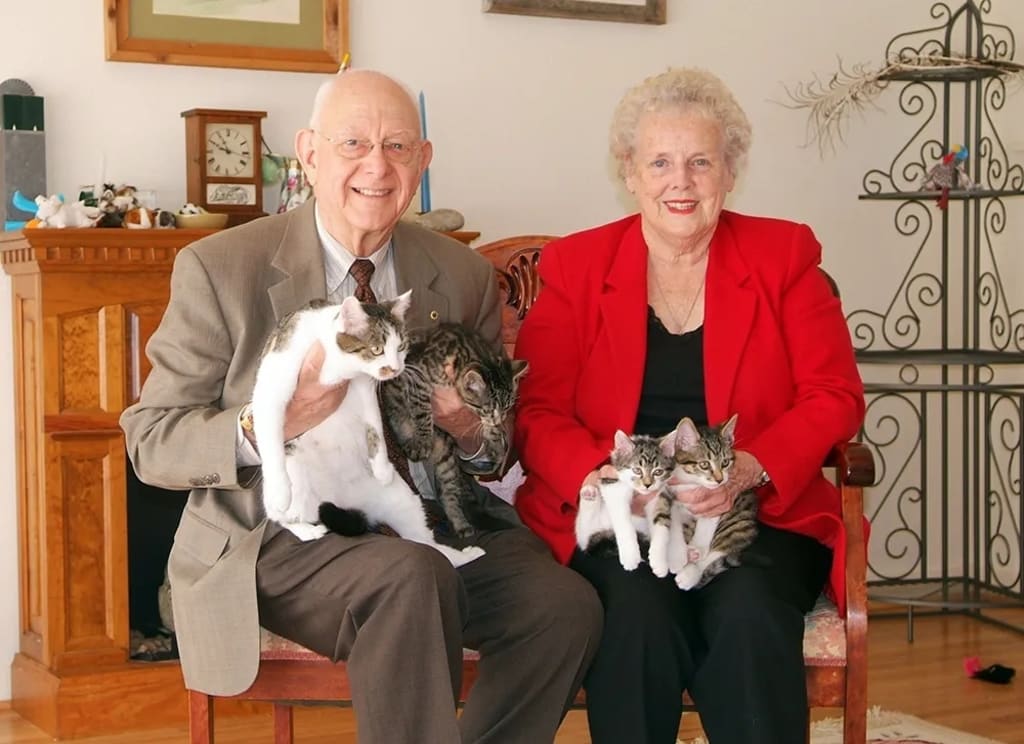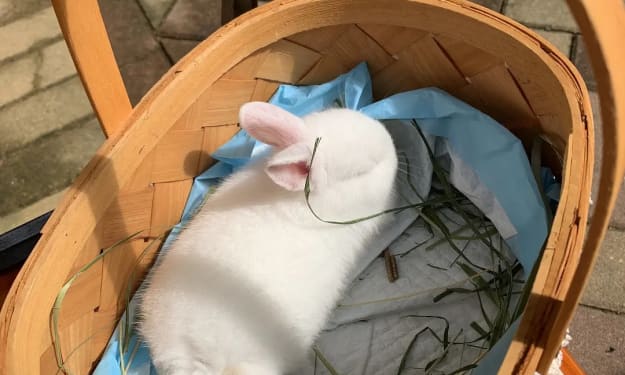If money were no object, would you clone your pet?
CC, the world's first cloned cat, died of kidney failure at Texas A&M University on March 3 at the age of 18. No one thought CC would live that long since most cloned animals don't live that long.

CC's life is a long experiment, and her birth seems to prove the omnipotence of human beings to bring the dead back to life. In recent years, there are also biological institutions in China advocating this business opportunity, but is it really good to clone cats?
Read the story behind the first cloned cat and you're sure to have your own answer.
CC always thought the baby's mouth was funny
CC's name is short for Copy Cat, and she wasn't born because someone loves cats, but for a rich man's dog.
In 1996, Dolly, the world's first cloned mammal, was born, prompting a billionaire named John Sperling to set up a $3.7 million fund the following year to clone a string named Missy, known as "reborn dog" project Missyplicity.
Technology is in a sense driven by money.
Missy
When the news got out, a lot of LABS followed. Two doctors, Lou Hawthorne (remember the name) and Charlie Long, are leading a company called Gene Storage and Cloning (GSC), hoping to make a business out of it.
With the money, the company found a lab at Texas A&M University's College of Veterinary and Biological Medicine, saved Missy's DNA, then 11, and began exploring pet cloning.
But cloning is always controversial, and the pressures of experimentation are enormous: technical, financial, ethical.
The Missyplicity project, in order to get things going, has established ethical constraints that promise lifelong care for whatever animals are produced.
Although the ultimate goal was a dog cloning business, it was easier to clone cats than dogs, so the team tested the waters with cats first.
Rainbow
The clone they chose was a short-haired trichuria named Rainbow.
It took three years to extract DNA from Rainbow's cells to create 87 cat embryos, which were then transferred into the wombs of surrogate cats.
After more than two months, only one healthy kitten was born, CC, a cloned cat that did not look like the original.
After CC was born, Texas A&M University ended its relationship with the cloning company, according to the book Dog Inc. : The Inside Story of the Clone's Best Friend, which revealed that the university was offended by the idea of cloning creatures as a "resurrected pet" business.
Even if the first cat clone "failed", the moment CC was born, a billion-dollar pet cloning industry was born.
On a wheel of profit, pet cloning companies have spread around the world, now costing $35,000 to clone a cat and $50,000 to clone a dog
CC grew up in a lab
But CC is a "failed" clone.
Duane Kraemer, a senior professor at Texas A&M University who led the cat cloning experiment, said after CC's birth that "cloning may disappoint people who expect their pets to come back to life."
Born Dec. 22, 2001, CC was adopted by Mr. Kramer and his wife, Shirley, when he was 6 months old and had three cubs with another lab cat.
According to the Kramers, CC is not only different from Rainbow in appearance, but also in temperament. Rainbow was timid and cautious, while CC was very outgoing.
The Kramers took CC and Cub
But why does CC have the same genes as Rainbow, but not a Rainbow?
Because "appearance" is not entirely innate.
The environment in which an animal is born, as well as its habits after birth, can affect how it looks. The key to a cat's level of appearance, coat color, can also be expressed in a myriad of different ways within the same gene.
When we carefully observe CC and Rainbow, we find that the general patterns of CC and Rainbow are very similar. The reason why they look completely different is that O (orange) hair cells (affected by the uterine environment) are randomly inactivated during the growth of CC, and part of melanin migrated.
To put it bluntly: it is normal for cloned cats to look different, but rare for them to look the same. (Solid cats are much more likely.)
CC met Rainbow when he was just over a year old
"It vindicates our continued opposition to cloning, which does not replicate life," said Pacelle, senior vice president of the Humane Society of the United States, in a stark but largely unspoken statement.
Cats only have a life span of more than ten years. Although the birth of CC gives many pet owners hope, they are likely to be disappointed if they hold the attitude of "continuing life" for their babies.
Even if you pay a huge amount of money to get the cat "directed reincarnation" back to you, but he no longer has the past memory, do not know you, then he is still the cat you want?
Carlson, the team that cloned CC, said only a small percentage of customers know exactly what they're getting, and that's a lot of money to get a cat that "looks like it."
In practice, cloning companies come with disclaimers that can be chilling for those eager to copy their pets.
Would you clone your own cat, regardless of price?
Before we answer that question, let's go back to the beginning of the cat clone story.
Cloning a dog is much more difficult than cloning a cat, so when CC was born, cloning a dog was not successful. In 2002, Missy, the heart of the Missyplicity project, was euthanized due to illness, but the project to clone her continues, and Sperling, the billionaire, has not given up.
In 2007, after 10 years of research and hard work, three clones of Missy were born in South Korea, named Mira (a Korean dragon), Cingu (Korean for "friend") and Sarang (Korean for "love").
Dog cloning Mira
Mira, the world's first cloned dog, bears a striking resemblance to Missy, but more than £12m has been spent on her birth.
Time has changed, with the commercialization of this technology, ordinary people need only a few hundred thousand dog cloning, it is better and cheaper to go to Korea.
It seems that money is good, money can bring loved ones back to life, is it so?
It is definitely not a matter of "doubling the life span of a cat by spending hundreds of thousands", because it is too costly, far more than just money.
The key player in this epic pet cloning saga is Lou Hawthorne, who is not only the leader of Missyplicity, but also the real owner of Missy, with Sperling as his wealthy friend.
The truth of cloning Missy is to make his mother happy. Lou's mother has a pet dog named Missy. She loves the dog very much, but as the dog's health gets worse and worse, his mother becomes more and more afraid of losing Missy.
Lou, himself a big shot in the biotech world, quickly came up with the idea of cloning dogs. He found the money, the team... Missy's cloned dog, Mira, was acquired a decade later. But! His mother refused to raise Mira.
According to Lou, what his mother wanted was a full, true Missy, personality included, but when she spent some time with Mira, the cloned dog, she realized it wasn't Missy.
But Mira is a dog that cost 12 million pounds.
Now Lou is raising the Mira sisters
The price of having Mira, according to Roh, is thousands of live experiments. To increase the success rate of the experiments, the Korean team involved in the latter stages used eggs from dogs with special access to the market for food. On average, every 80 eggs produce one viable calf, but only one in four or five clones may resemble the original. Most unacceptable to Lu is that if the cloning doesn't work out, the resulting pups are slaughtered for destruction.
All this stuff in the lab, it just blew Lou up.
In 2009, Lew, the CEO of an American biotech company, decided to abandon the market for cloned pets, citing his stated reasons: 1) the market was small; 2. Price war chaos; 3. The patent cannot be protected; 4. Ethical problems that are difficult to overcome; 5. Cloning will bring many unpredictable consequences (his original words mentioned that even gender is not guaranteed, if anyone knows, please share).
Behind every one of these reasons is a knife.
"I believe that pet cloning does contribute to family happiness, but it wouldn't be possible without hundreds of other human and animal suffering experiments," Lu said. "The cost is too great. If the cloning industry collapses one day, I won't care."
Dr. Kramer, who raised CC all his life, wrote in his paper: "For years, we have emphasized that cloning is a breeding technique, not a resurrection technique."
He confesses that his biggest fear is that people will think they can bring back dead pets when they can't, and will think they can start all over again, trivializing animal life.
So if cloning is a penitent medicine, maybe it's better not to have a penitent medicine in this world.
That's the narrow way I see it.






Comments
There are no comments for this story
Be the first to respond and start the conversation.